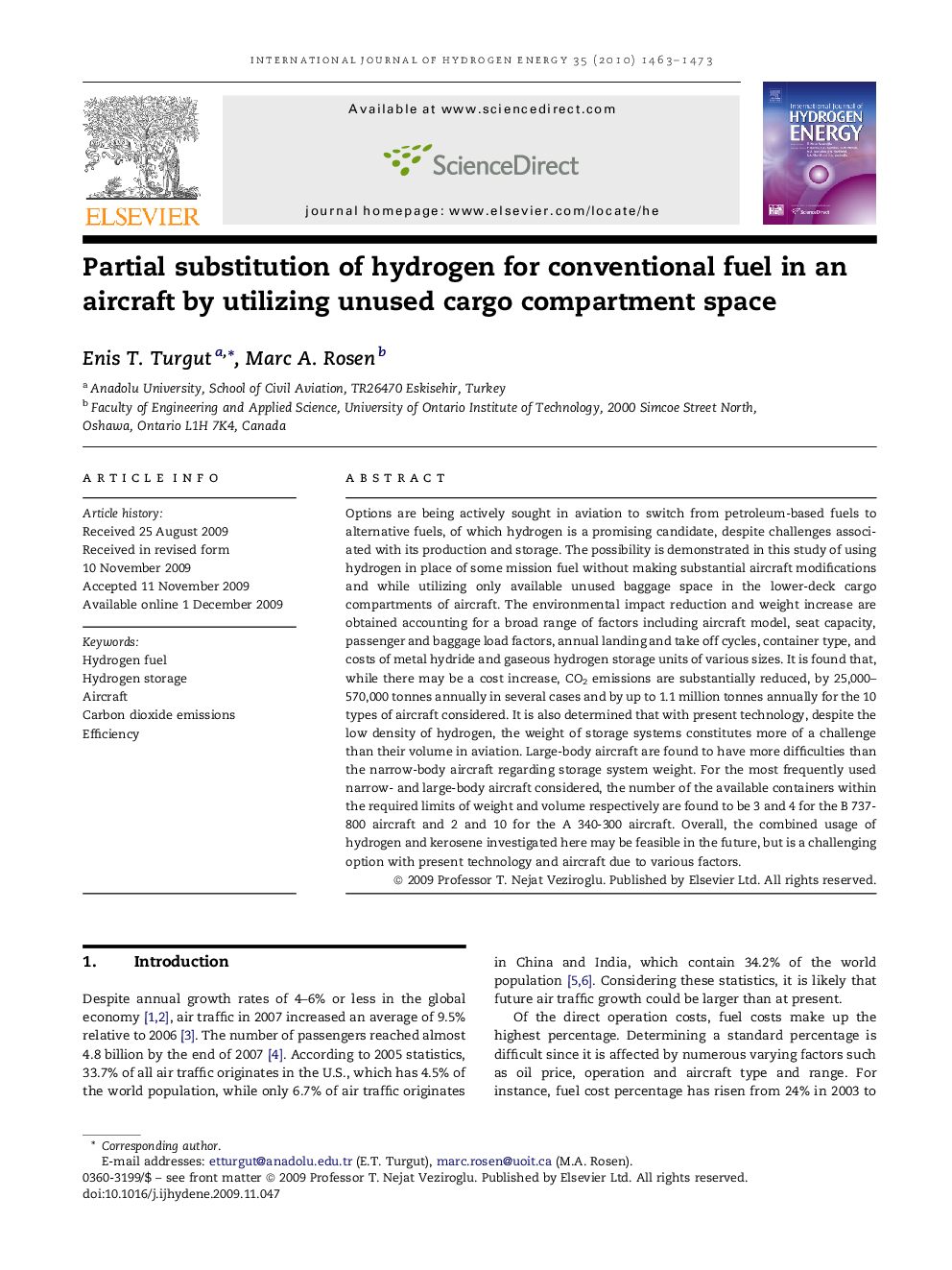| Article ID | Journal | Published Year | Pages | File Type |
|---|---|---|---|---|
| 1273541 | International Journal of Hydrogen Energy | 2010 | 11 Pages |
Options are being actively sought in aviation to switch from petroleum-based fuels to alternative fuels, of which hydrogen is a promising candidate, despite challenges associated with its production and storage. The possibility is demonstrated in this study of using hydrogen in place of some mission fuel without making substantial aircraft modifications and while utilizing only available unused baggage space in the lower-deck cargo compartments of aircraft. The environmental impact reduction and weight increase are obtained accounting for a broad range of factors including aircraft model, seat capacity, passenger and baggage load factors, annual landing and take off cycles, container type, and costs of metal hydride and gaseous hydrogen storage units of various sizes. It is found that, while there may be a cost increase, CO2 emissions are substantially reduced, by 25,000–570,000 tonnes annually in several cases and by up to 1.1 million tonnes annually for the 10 types of aircraft considered. It is also determined that with present technology, despite the low density of hydrogen, the weight of storage systems constitutes more of a challenge than their volume in aviation. Large-body aircraft are found to have more difficulties than the narrow-body aircraft regarding storage system weight. For the most frequently used narrow- and large-body aircraft considered, the number of the available containers within the required limits of weight and volume respectively are found to be 3 and 4 for the B 737-800 aircraft and 2 and 10 for the A 340-300 aircraft. Overall, the combined usage of hydrogen and kerosene investigated here may be feasible in the future, but is a challenging option with present technology and aircraft due to various factors.
